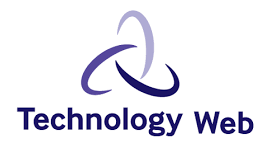As companies move towards this digital transformation, the role of human resources becomes increasingly important. Through the use of technological tools, such as an HRIS system, detailed reports or new recruiting software, as well as AI-based analytics, HR departments can make data-driven decisions that will help them better manage their workforce and optimize their operations. By taking advantage of technology, human resources departments can also collect and analyze data, for example, on employee performance, job satisfaction, recruitment trends and much more. This data can be used to develop a comprehensive HR strategy, tailored to the needs of the organization. Additionally, it can help recognize areas where improvement is needed to ensure that employees are engaged and productive, while being able to present a return on investment from HR initiatives to members of management.
The evolution of the advisory role: a strategic-analytical approach
More and more companies are embarking on modernization projects using technology. In turn, this helps them obtain more accurate information and operate more efficiently. In order to overcome the blind spots of this digital transformation, HR professionals are called upon to change their business proposition, towards an approach based more on strategy and data analysis. The concept of strategic partner is thus reinforced, since it is now a question of formulating recommendations based on the collection of information obtained thanks to technological systems. From there, HR partners are better equipped to be part of an organization’s decision-making committee and are able to understand and adapt the human resources strategy to the company’s business strategy. To do so, they need to make more use of technology to gain more information, for process automation purposes and as a database to aid in future decisions.
Then the myth of not having to study data in the HR world has now become a thing of the past. HR professionals are increasingly being asked to present the correlation between their proposal and the observations captured through the various technological systems. Relying on numerical data alone will not suffice and risks presenting an incomplete reality. More specifically, it is important during this stage to fully understand this data according to the real context of the organization. This requires in-depth analysis by HR professionals, allowing them to define the concrete meaning of the figures or reports studied. For example, a high turnover rate of a certain role can be caused by multiple factors, such as management manner, clarity of responsibilities or an unattractive salary. Also, the results of exit interviews can now be saved and referenced using computer systems, allowing us to extract trends in order to present a tangible action plan that will help reduce this turnover rate. It is therefore essential for HR departments to acquire analytical skills to process, articulate and interpret this complex data, able to support and present viable improvement options.
On this level, it is again the analytical capacity of HR professionals that will allow companies to act proactively, by selecting only the initiatives that harmonize with the business objectives of each organization.
Give credibility to HR recommendations
Collect relevant data
It has always been difficult for HR professionals to pass on recommendations due to the qualitative nature of HR proposals (Guerrero et al., 2022). Indeed, it is not uncommon to hear that HR decisions are based on human and relational dimensions and that in the eyes of decision-makers, this often makes them biased. It is therefore more important than ever to use the technological tools at our disposal in order to add the necessary credibility and ensure harmonization with the requirements of the management committee. A plan that is both strategic and credible can be drawn up in three simple steps:
Present the facts:using technology, human resources specialists can rely on past trends to justify future decisions. Concrete situations with supporting evidence make an action plan more credible. For example, justifying the transition from traditional recruitment with a simple job posting to a modernized recruitment platform can be done by demonstrating the latter’s ability to capture key data. Invest in software that offers the ability to build a larger database, attract candidates more easily through attraction emails,
Collect relevant data: HR professionals will have to make greater use of tools such as employee satisfaction surveys, performance evaluations or staffing data in order to explain certain decisions made, based on precise information.
Analyze human capital and cost: in order to ensure stakeholder buy-in, it is important that each action plan be accompanied by a cost analysis, i.e. the budgetary impact, as well as a view of all of the results obtained following the success of the strategies put forward.
By adopting this approach, HR professionals in the digital age will thus develop the much-sought-after “business acumen”, based more on the concrete and by proposing solutions adapted to the business strategy of organizations.
Justify the ROI of HR initiatives
Human capital, often an intangible asset in the business world, is nevertheless at the heart of all the activities of an organization. Another challenge that stems from this intangibility is the difficulty in demonstrating the return on investment of certain HR initiatives. However, thanks to technological tools, it has become easier to quantify the success of these. Here are some tools that can help HR professionals take advantage of digital to overcome this misconception. By following the approach below, HR departments will therefore be able to provide a concrete picture of the financial impact that HR initiatives will have on a company’s overall expenses. This allows stakeholders to understand the relationship between the investment made and the beneficial results for the organization,
Data Collection: Collect data for analysis, such as turnover rate or results of an employee satisfaction survey.
Data analysis: analyze and measure the effect of different HR initiatives. For example, following a skills development program,




